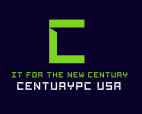Content

That makes it simple to calculate, but not always the most accurate way to depreciate an asset. The most common scenario for depreciation recapture, at least for real estate investors, occurs with rental properties. Depreciation recapture involves paying taxes on gains you had previously deducted for in the form of depreciation. Every year, you write down the same amount of depreciation as an expense on your tax return, and this is done for a preset number of years. As explained above, the number of years varies based on the type of asset, and how long it’s expected to last. As the name suggests, straight-line depreciation requires that you spread out the original cost of the property evenly, over a set period of time.
- For each accounting period, or year, the coffee shop would depreciate the espresso machine by $600.
- Reed, Inc. also evaluates the incremental borrowing rate for the lease to be 4%.
- Small and large businesses widely use straight line depreciation for its simplicity, accuracy, and functionality, but other methods of calculating an asset’s depreciation value exist.
- Each year, for seven years, you will record $600 of depreciation.
- Whereas the depreciable base is the purchase price minus the salvage value.
- Each person should consult his or her own attorney, business advisor, or tax advisor with respect to matters referenced in this post.
- If it was acquired or disposed during the year then ideally depreciation expense should be calculated only for the period it was in use instead of whole year.
The straight line depreciation is calculated using the asset’s total purchase price, the scrap value, and the useful life, or the number of years it’s estimated to last. You simply subtract the scrap value from the total purchase price and divide that total by the useful life amount to reach the annual depreciation for the asset.
Straight-line depreciation in Debitoor
Daniel is an expert in corporate finance and equity investing as well as podcast and video production.

According to straight line depreciation, the company machinery will depreciate $500 every year. Is the estimated time or period that an asset is perceived to be useful and functional from the date of first use up to the day of termination of use or disposal. A company building, for example, is being used equally and consistently every day, month and throughout the year. Therefore, the straight line depreciation depreciation value recorded on the company’s income statement will be the same every year of the building’s useful life. November and December therefore only two month’s depreciation will calculated on proportionate basis out of total 12. Calculate depreciation for the first year using straight-line method if asset was acquired on first November and December 31 is financial year end.
What Are Some Examples of Using Straight Line Depreciation Method?
Another time this method of calculating depreciation comes into play is during tax preparation. The IRS allows for depreciation to be a write-off, and in some cases, the full cost of an asset is deductible. The double-declining balance method is a form of accelerated depreciation. It means that the asset will be depreciated faster than with the straight https://www.bookstime.com/ line method. The double-declining balance method results in higher depreciation expenses in the beginning of an asset’s life and lower depreciation expenses later. This method is used with assets that quickly lose value early in their useful life. A company may also choose to go with this method if it offers them tax or cash flow advantages.
Because this method is the most universally used, we will present a full example of how to account for straight-line depreciation expense on a finance lease later in our article. According to management, the fixed assets have a useful life of 20 years with an estimated salvage value of zero at the end of their useful life period. Let’s say, for instance, that a hypothetical company has just invested $1 million into long-term fixed assets.
Understanding the Straight-Line Method of Depreciation
Tim is a Certified QuickBooks Time Pro, QuickBooks ProAdvisor for both the Online and Desktop products, as well as a CPA with 25 years of experience. He most recently spent two years as the accountant at a commercial roofing company utilizing QuickBooks Desktop to compile financials, job cost, and run payroll. The group life determines how long we’re going to depreciate the group of assets based on its group depreciation. In the list of assets provided by ABC Company, we observed that each fixed asset has different useful lives. It means that we expect to retire the asset earlier than asset #2. But since these assets are interrelated, it would be inconsistent to depreciate them individually. There are a couple of accounting approaches for calculating depreciation, but the most common one is straight-line depreciation.

You need to calculate the depreciation amount once and keep reducing it from the asset’s value. You can quickly get away with all the complex calculations involved in calculating depreciation using the other depreciation methods. Straight line depreciation allows you to use an asset and spread the cost across the time you use it. Instead of one, potentially large expense in a single accounting period, the impact on net income for each period will be smaller. After calculating the depreciation expense, you’ll know how much of the asset’s total cost should be expensed each period. Straight line depreciation is a method of depreciating fixed assets, evenly spreading the asset’s costs over its useful life. The asset’s value is reduced on an annual basis until it reaches its estimated salvage value at the end of its useful life.
Straight-line depreciation in action
While these lives are required to be used for income tax purposes, they aren’t required for bookkeeping. As you can see from the amortization table, this continues until the end of Year 10, at which point the total asset and liability balances are $0. Further, the full value of the asset resides in the accumulated depreciation account as a credit. Combining the total asset and accumulated depreciation amounts equals a net book value of $0. A strong form finance lease is one that has a transfer of ownership, a bargain purchase option , or a purchase option the lessee is reasonably certain to exercise. With a strong form lease, the asset is depreciated over the useful life of the asset as it is assumed the lessee will own the asset at the end of the lease term. For weak form finance leases where the lessor retains ownership of the asset at the end of the lease term, the asset is depreciated over the shorter of the useful life or the lease term.
- Accumulated depreciation is a contra asset account, which means that it is paired with and reduces the fixed asset account.
- Calculating straight line depreciation is a five-step process, with a sixth step added if you’re expensing depreciation monthly.
- It is also used at audit time to see the impact of proposed audit adjustments.
- Whenever you create a new expense with Debitoor invoicing software, you will be given the option of marking it as an asset.
- Therefore, Company A would depreciate the machine at the amount of $16,000 annually for 5 years.
- Other methods such as the sum of years, double-declining balance, or unit-of-production adjust their figures each year.
- The amount obtained as a result of this formula will have to be reduced from the asset’s book value every year.
There are a few ways to calculate depreciation, but straight line depreciation is the simplest method used by accounting professionals. Large companies, small businesses, and sole proprietorships incur expenses when purchasing equipment, office furniture, or even a coffee machine for the break room. Since these business assets are often used on a daily basis, they tend to wear down over time. When you’re interviewing for accounting roles, employers will expect you to understand common business terms and formulas like straight line depreciation.
Example of Straight Line Depreciation
In the article, we have seen how the straight-line depreciation method can depreciate the asset’s value over the useful life of the asset. It is the easiest and simplest method of depreciation, where the asset’s cost is depreciated uniformly over its useful life.
- The straight line calculation, as the name suggests, is a straight line drop in asset value.
- The IRS allows for depreciation to be a write-off, and in some cases, the full cost of an asset is deductible.
- Typically, real estate investors want to deduct as much as possible right now, for the current tax year, but Uncle Sam often forces them to slow down and depreciate expenses over time.
- To achieve this requirement, accountants must estimate some amounts.
- This method is used with assets that quickly lose value early in their useful life.
- In the absence of any information on entity’s policy, depreciation is usually calculated only for the period asset was in use and adjusting the expense by the fraction of period if necessary.
